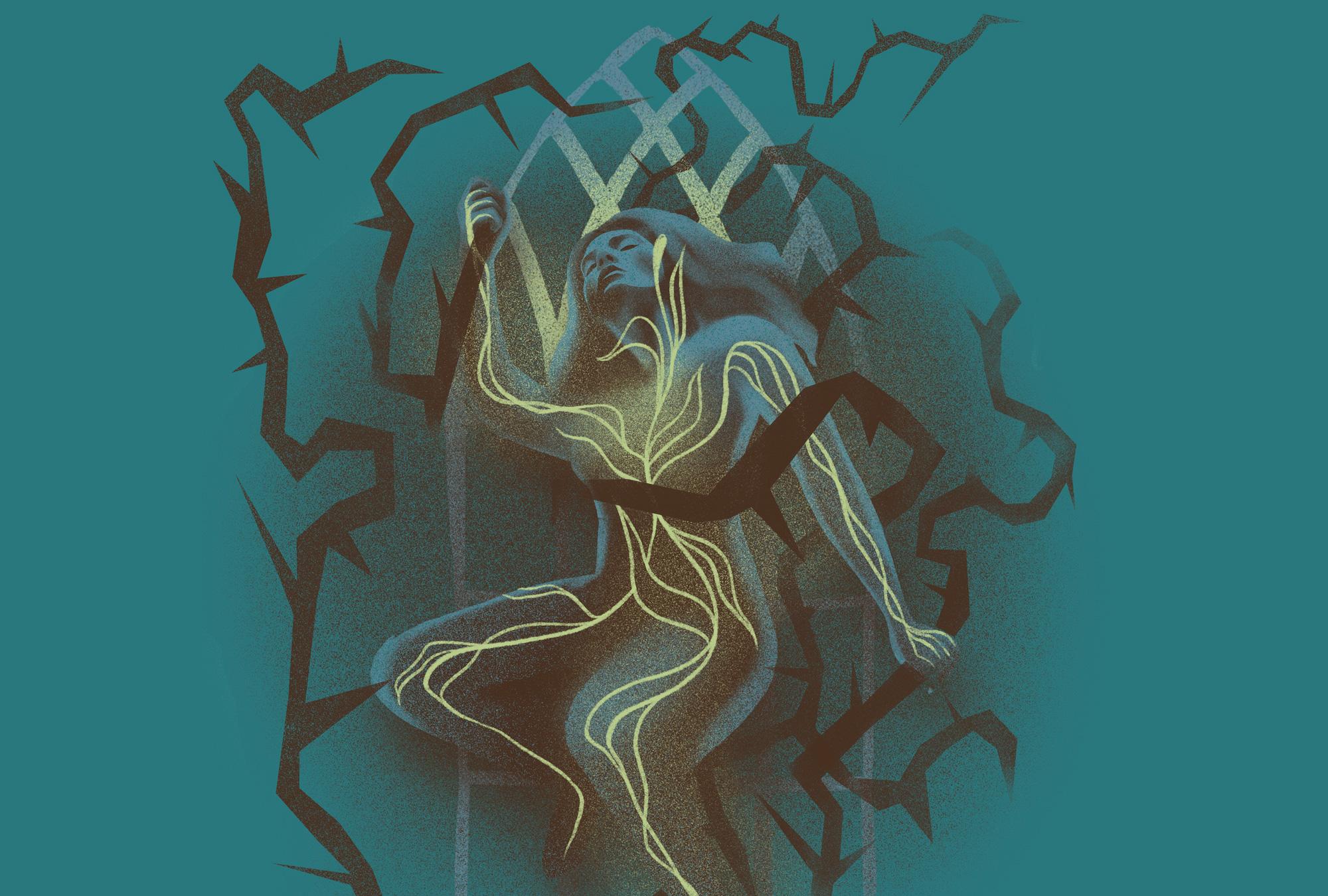
Illustration by Ryan McQuade
How to Find Healing From Religious Trauma
THE FIRST TIME I became conscious that I was carrying the effects of religious trauma, I had just moved to Seattle and was sitting in a church, sweating.
My heart was beating fast; I couldn’t understand what was happening. This church, one I had chosen expressly because of its progressive, LGBTQ+ affirming stance, was supposed to be safe for someone like me, a queer person who deeply valued my faith. But I didn’t feel safe. I looked at the faces in the room with suspicion, searching for any indication of a bait-and-switch, and left the building quickly once the service was over.
Despite what I knew about the church — they welcomed LGBTQ+ people at any level of leadership, were committed to anti-racism work, and weren’t afraid of doubt or theological exploration — my body told me another story. As I sat in the cold folding chair, I tried to reason with myself, repeating these facts to calm down. But I didn’t feel calmer; I felt worse. I sat on my hands, legs shaking, as I waited for the service to end.
Because I had moved to Seattle to work on a master’s degree in counseling psychology from an institution that specialized in trauma, I soon learned what had happened: In that moment, my body had experienced the effects of trauma. Even though I cognitively knew the church was supposed to be safe, my body couldn’t discern this church from all the churches I had been in before — churches filled with people who weren’t afraid to tell me I needed to become straight for God to save me from hell. My body was sending warning signs: Be careful, environments like this aren’t safe. Despite the years of work I had done to detach myself from the rigid belief system of my youth, despite the ways I had fought to find a more life-giving approach to theology, I was beginning to reckon with the reality that changing my beliefs didn’t mean I had healed from the environments in which I was raised.
Now, years later, I see more people waking up to the realities of lingering religious trauma. When I scroll through my streaming apps, I see documentaries such as Shiny Happy People, Pray Away, and Hillsong: A Megachurch Exposed that detail different forms of religious harm. I think this growing awareness of religious trauma is part of the driving force behind “deconstruction,” a buzzword that describes the process of reevaluating, changing, and sometimes abandoning one’s beliefs. But what I don’t see as often on Netflix — or on podcasts or on social media or at church — is honest talk about the process of healing. And as someone who now works as a therapist helping survivors of religious harm find healing, I know there is a lot more to say.
Looking for healing
RESEARCHERS AT THE Religious Trauma Institute use the phrase “adverse religious experiences” to describe “any experience of a religious belief, practice, or structure that undermines an individual’s sense of safety or autonomy and/or negatively impacts their physical, social, emotional, relational, or psychological well-being.” Often, folks come to therapy after trying to overcome these negative experiences alone, usually in the same way I had — by changing their beliefs and assuming that would be enough to provide healing. Others leave their faith altogether. However, after finding a more congruent belief system, many people begin to bump into the same reality I had: While changing beliefs is a natural starting point, it doesn’t necessarily equate to healing.
I relayed parts of my story to Laura Anderson, a Nashville-based psychotherapist, co-founder of the Religious Trauma Institute, and author of the new book, When Religion Hurts You: Healing from Religious Trauma and the Impact of High-Control Religion. Many people fail to recognize “how beliefs live in our bodies,” she told me. “If we don’t hit that piece, we are going to maybe change our cognitive beliefs, but our bodies are probably still going to be pretty fundamentalist, pretty triggered, and pretty hypervigilant.” In other words, what I experienced years ago in Seattle on that church folding chair.
Read the Full Article

Got something to say about what you're reading? We value your feedback!


